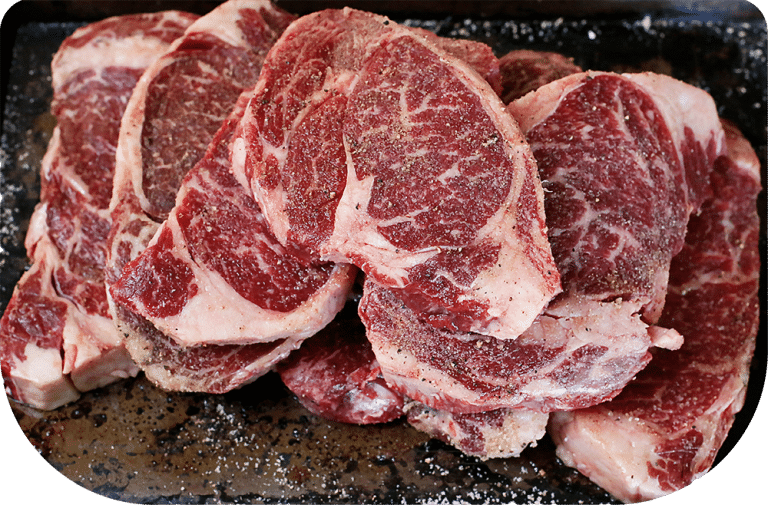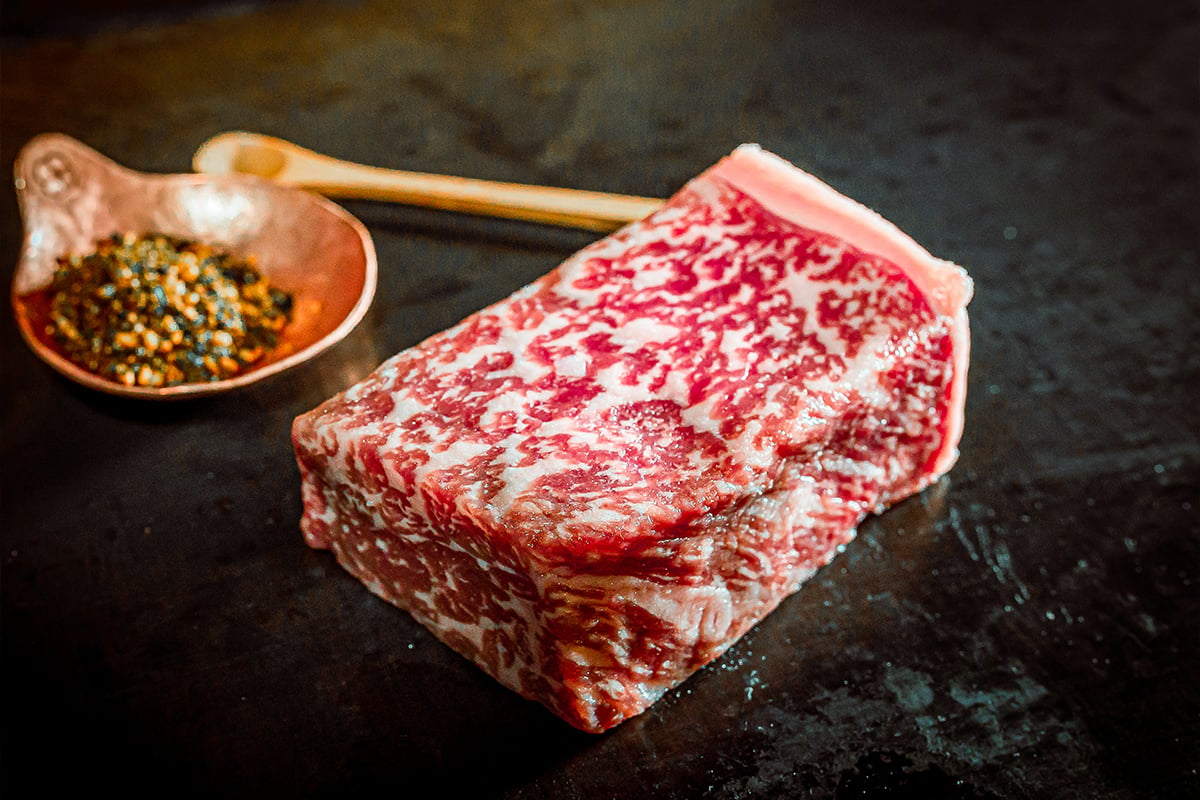Wagyu Mentah: A Journey Into The World Of Raw Beef
Wagyu Mentah: A Journey into the World of Raw Beef
Wagyu Mentah: A Journey into the World of Raw Beef

The world of food is vast and diverse, offering a kaleidoscope of flavors, textures, and culinary experiences. While many cultures embrace the art of cooking, there are those who find themselves drawn to the raw, the unadulterated, the primal. One such experience is the consumption of wagyu mentah, a Japanese delicacy that involves savoring raw, thinly sliced wagyu beef.
This article embarks on a journey into the world of wagyu mentah, exploring its origins, cultural significance, the intricate process of preparation, and the unique sensory experience it offers.
From Humble Beginnings to Culinary Icon
Wagyu mentah, meaning "raw wagyu," is a testament to the Japanese appreciation for the natural beauty and flavor of ingredients. Its origins can be traced back to the Edo period (1603-1868), when Japanese farmers began selectively breeding cattle for their meat. The resulting breed, known as wagyu, is characterized by its exceptional marbling, a network of intramuscular fat that gives the meat its signature buttery richness and tenderness.
In the early days, wagyu was primarily consumed as a luxury item for the elite. However, as its popularity grew, so did the demand for innovative ways to enjoy its unique qualities. This led to the development of wagyu mentah, a dish that celebrates the purity of the meat’s flavor and texture.
Table of Content
The Art of Preparation: A Symphony of Precision
Preparing wagyu mentah is an art form that requires meticulous attention to detail and a deep understanding of the meat’s characteristics. The process begins with the selection of the highest quality wagyu beef, typically from the loin or rib sections, known for their tenderness and marbling.
Once the meat is sourced, the next step involves precise slicing. The beef is thinly sliced, often to a thickness of just a few millimeters, using a sharp knife or a specialized slicer. This thinness allows the meat to melt in the mouth, releasing its full flavor and texture.
The final step involves presentation. Wagyu mentah is typically served on a bed of fresh greens, such as lettuce or spinach, and accompanied by a variety of condiments. These condiments can range from simple, such as soy sauce and wasabi, to more elaborate, such as ponzu sauce, grated daikon radish, and pickled ginger.
A Sensory Symphony: Exploring the Flavors and Textures

The experience of consuming wagyu mentah is a sensory journey. As the thinly sliced meat melts on the tongue, a wave of rich, buttery flavor washes over the palate. The marbling, a testament to the careful breeding and feeding of the wagyu cattle, contributes to the meat’s unparalleled tenderness and melt-in-your-mouth texture.
The accompanying condiments play a crucial role in enhancing the flavor profile. Soy sauce adds a salty umami note, while wasabi provides a refreshing kick. Ponzu sauce, a citrus-based dressing, adds a tangy element, while grated daikon radish offers a crunchy contrast.
- Wagyu: From Pasture To Plate: A Review Of The Breeding And Production Of Wagyu Cattle
- The Art Of The Vehicle Review: Beyond The Numbers, Towards The Experience
- A Symphony Of Flavor: Exploring The World Of Wagyu Beef
- A Symphony Of Flavor: A Review Of Olive Wagyu Sirloin
- The Wagyu A5: A Journey Of Luxury And Flavor
Cultural Significance and Etiquette
Wagyu mentah holds a special place in Japanese culinary tradition. It is often served at special occasions, such as birthdays and anniversaries, and is considered a symbol of luxury and good taste.
The consumption of wagyu mentah is also governed by certain etiquette rules. It is customary to eat the meat in small bites, savoring each mouthful and appreciating the interplay of flavors and textures. It is also considered polite to use chopsticks to pick up the meat, rather than forks or knives.

Beyond the Plate: The Ethical Considerations
The popularity of wagyu mentah has sparked discussions about the ethical implications of consuming raw meat. Some argue that the risk of foodborne illness is heightened with raw meat, while others highlight the importance of sourcing the meat from reputable sources and ensuring proper handling and preparation.
It is crucial to acknowledge the potential risks associated with consuming raw meat and to prioritize food safety practices. Choosing reputable suppliers, adhering to proper hygiene standards, and understanding the potential risks are essential steps in enjoying this culinary experience responsibly.
Wagyu Mentah: A Culinary Adventure for the Bold
Wagyu mentah is a culinary adventure for those willing to embrace the raw and the unadulterated. It is a dish that celebrates the natural beauty and flavor of wagyu beef, offering a sensory journey that tantalizes the palate and sparks a conversation about the intersection of food, culture, and ethics.
For those seeking a unique and memorable culinary experience, wagyu mentah offers a chance to explore the world of raw beef and appreciate the artistry of Japanese cuisine. However, it is essential to approach this experience with an informed and responsible mindset, prioritizing food safety and ethical considerations.
Beyond the Basics: Exploring the World of Wagyu Mentah
While the traditional preparation of wagyu mentah involves thinly sliced beef served with simple condiments, the culinary world is constantly evolving, offering innovative takes on this classic dish.
1. Wagyu Mentah Tacos: A fusion of Japanese and Mexican flavors, this dish features thinly sliced wagyu beef nestled in soft corn tortillas, topped with fresh cilantro, diced onions, and a tangy lime-based sauce.
2. Wagyu Mentah Poke Bowls: Drawing inspiration from Hawaiian cuisine, wagyu mentah is incorporated into colorful poke bowls, featuring sushi rice, avocado, edamame, and a variety of sauces and toppings.
3. Wagyu Mentah Carpaccio: This elegant presentation features thinly sliced wagyu beef arranged artistically on a plate, drizzled with olive oil, lemon juice, and a sprinkle of parmesan cheese.
4. Wagyu Mentah Nigiri: A twist on traditional nigiri sushi, wagyu mentah is placed atop a bed of vinegared rice, creating a decadent and flavorful bite.
5. Wagyu Mentah Tartare: This French-inspired dish involves finely chopped wagyu beef mixed with capers, onions, and aioli, creating a rich and flavorful spread.
- Wagyu: From Pasture To Plate: A Review Of The Breeding And Production Of Wagyu Cattle
- The Art Of The Vehicle Review: Beyond The Numbers, Towards The Experience
- A Symphony Of Flavor: Exploring The World Of Wagyu Beef
- A Symphony Of Flavor: A Review Of Olive Wagyu Sirloin
- The Wagyu A5: A Journey Of Luxury And Flavor
6. Wagyu Mentah Sashimi: This Japanese delicacy features thinly sliced wagyu beef served alongside a variety of sashimi accompaniments, such as soy sauce, wasabi, and pickled ginger.
7. Wagyu Mentah Pizza: A culinary fusion of Japanese and Italian flavors, this pizza features a thin crust topped with thinly sliced wagyu beef, mozzarella cheese, and a drizzle of ponzu sauce.
The Future of Wagyu Mentah
As the demand for wagyu beef continues to grow, so does the exploration of new and innovative ways to enjoy its unique qualities. Wagyu mentah, with its inherent simplicity and focus on the purity of flavor, is poised to remain a cornerstone of Japanese culinary tradition while inspiring chefs and food enthusiasts to push the boundaries of creativity and explore the endless possibilities of this exceptional ingredient.
Whether enjoyed in its traditional form or reimagined in contemporary dishes, wagyu mentah continues to captivate palates and ignite a passion for the raw, the unadulterated, and the truly exquisite.
sure
Thus, we hope this article has provided valuable insights into Wagyu Mentah: A Journey into the World of Raw Beef. We appreciate your attention to our article. See you in our next article!
Posting Komentar untuk "Wagyu Mentah: A Journey Into The World Of Raw Beef"